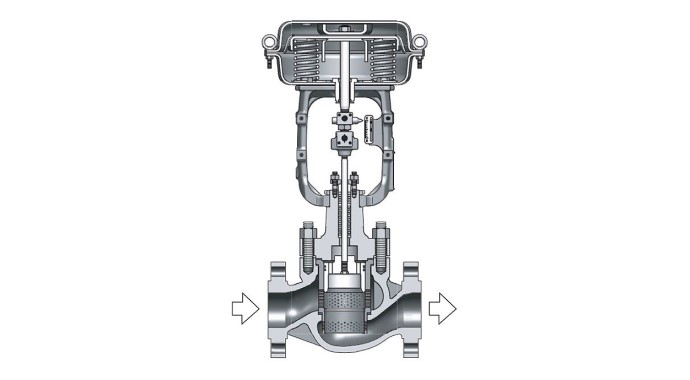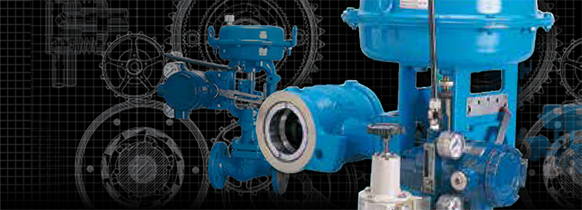
Cage-guided control valve to reduce aerodynamic noise in compressible fluid service.
- The main body has a structure with a stabilizer and a large valve capacity.
- Control of high differential pressure with small operation force
- Low noise and dynamic stability
- Compliant with IEC 61508 functional safety standards
| Structural drawing | Image

|
|---|---|
| Valve type | Low-noise cage type control valve |
| Model No. | HCN_ _ _ |
| Size | 1-1/2" to 8" |
| Pressure rating | ANSI/JPI 150 to 600 JIS10K to 40K |
| End connection | Flanged : RF, FF, RJ Welded : SW, BW |
| Body material | Carbon steel Stainless steel |
| Trim material | SCS24 SCS14A, SCS14A with CoCr-A, SCS14A with Atomloy treatment |
| Temperature range | -196 to 566°C |
| Leakage performance | Class III |
| Cv range | 11 to 580 |
| Range ability | 25:1 (option 50:1) |
| Application |
|
| Option | Low emission gland packing Bellow seal bonnet |
A wide range of material specifications
Products can be provided by using different materials for valve stems - e.g., carbon steel is generally used with water, steam, and fuel oil; and high corrosion resistant stainless steel that is essential for controlling corrosive fluids.
Corresponding to service
The excellent anti-cavitation performance of these cage valves plays an essential role in controlling fluids at high temperatures and under high differential pressures. Optional specifications can be applied to reduce aerodynamic noise produced by steam and gas.
Excellent seat leakage performance
Metal sheet tight shut (class III) are available.
Excellent external leakage prevention performance
A bellows seal can be added to valve stems. Increasingly sought-after specifications for gland packings can be applied to comply with fugitive emission regulations of volatile organic compounds.
High control performance
High control performance is achieved by a combination of wide rangeability and a smart valve positioner.
The original internal valve structure adopted by azbil essentially eliminated the shortcomings of conventional double-seated control valves that suffered from reversal of fluid reaction force, thereby achieving stable control.


